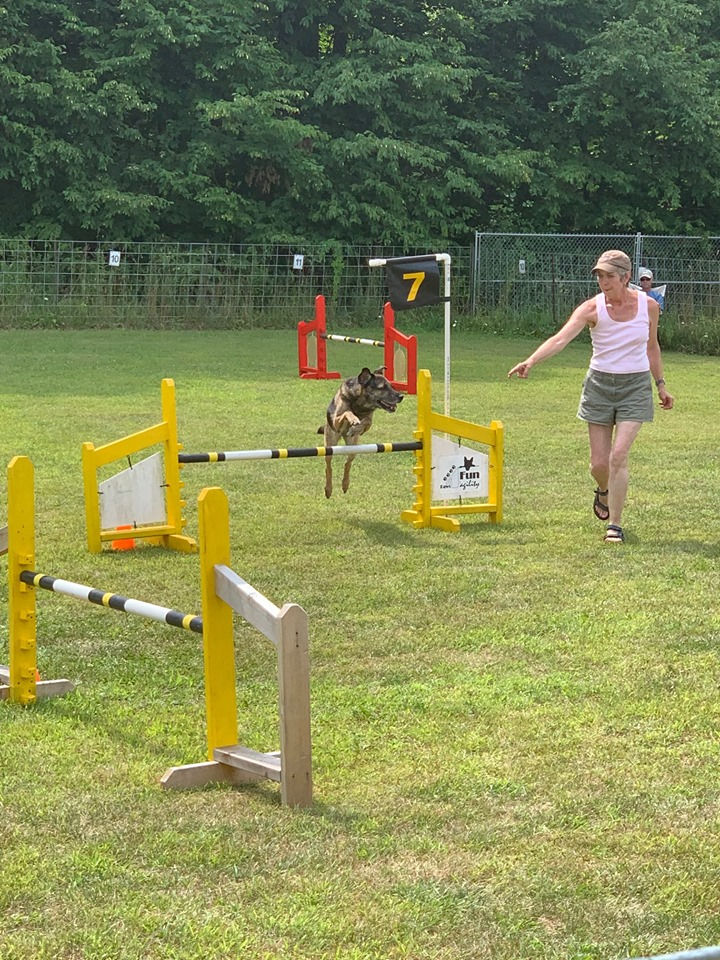Down Means Down ... Until You Leave the House!
- Hotdiggity Dog Training
- May 27, 2021
- 3 min read
Updated: Jul 28, 2021

"But he does it at home!"
Ah, the wail of the frustrated owner! Just as the robin’s song heralds the arrival of spring, the owner’s lament signals the start of the second or third lesson of obedience classes.
People arrive at class, confident that their dog is going to be brilliant at the various exercises because they practiced them every day, at home. But usually what happens is when the instructor says, "everyone ask their dog to lie down", their dog looks at them like they’ve never heard the word before and have no idea what it means.
This is followed by echoes of "Down. … Down! … DOWN! …" with the owners getting more frustrated and the dogs getting more confused. Just as tourists have to learn that repeating English words louder and more slowly does not help get their meaning across to the Italian fruit seller in Rome, owners have to learn that loudly repeating a command to their dog does not help him understand it.
The problem is not that the dog doesn’t understand the word, but that he doesn’t understand the word when the owner is not standing directly in front of him, with his left hand behind his back, in the living room next to the coffee table. In other words, he doesn’t understand the word except under the exact same circumstances that he has heard it all week.
The problem is that dogs do not generalize.
A command such as "down" needs to be practiced in many different environments, with the owner in different body positions, before the dog understands that the word means the same thing, every time, everywhere.
Once the dog understands that, he then has to learn that he has to comply with the command even when there are distractions around. And distractions for a dog can be anything from a bug crawling along the ground to fun Uncle Bobby coming in the front door.
Teaching dogs to ignore things in the environment is part of what is called "proofing". We teach a dog to lie down on command, but then we "proof" his understanding of the command by presenting him with gradually stronger distractions and rewarding him for ignoring them.
Only when your dog will lie down on command in the living room, in the yard, in the driveway, and in front of a coffeeshop, and stay in that position while ignoring all the smells, the cars going by, and the children playing on a skateboard, can we say that the dog is truly trained to "down" on command.
Unfortunately, many people come to obedience classes claiming that their dogs already know how to sit or lie down when told, and conversations often sound like the following:
Instructor (me): "Okay, now we’re going to teach the dogs to lie down, and we’re going to start by using a hand signal."
Owner: "My dog already knows how to do that."
Instructor: "That’s great. Let me see."
Owner: "Down." Dog gives owner an astonished look ("Are you talking to me…?") "Down." Dog looks around the training hall. ("Maybe she’s talking to that guy over there…".) "Down … down … DOWN!" Dog starts sniffing the ground.
Instructor: "Okay. So he doesn’t really understand what you’re asking for. Plus you’re giving him a verbal command and I really would like you to use a hand signal. We’ll add the verbal command later."
Owner: "But this is how I taught him. And he does it at home."
Instructor: "Okaaayy. But he’s not doing it here. So that means he doesn’t yet understand the command."
Owner: "He does! He does it at home. I think he’s just not feeling well right now."
It can often take quite a bit of convincing to get an owner to go through the steps of teaching a command properly, so that the dog really does understand it, and will do it under almost any circumstances.
It is the instructor’s job to explain how this is done, and why, so that the owner is not frustrated, and the dog can learn. Then they both go home happy and the following week the owner can say, "He does it everywhere I ask!"
.png)



Comments